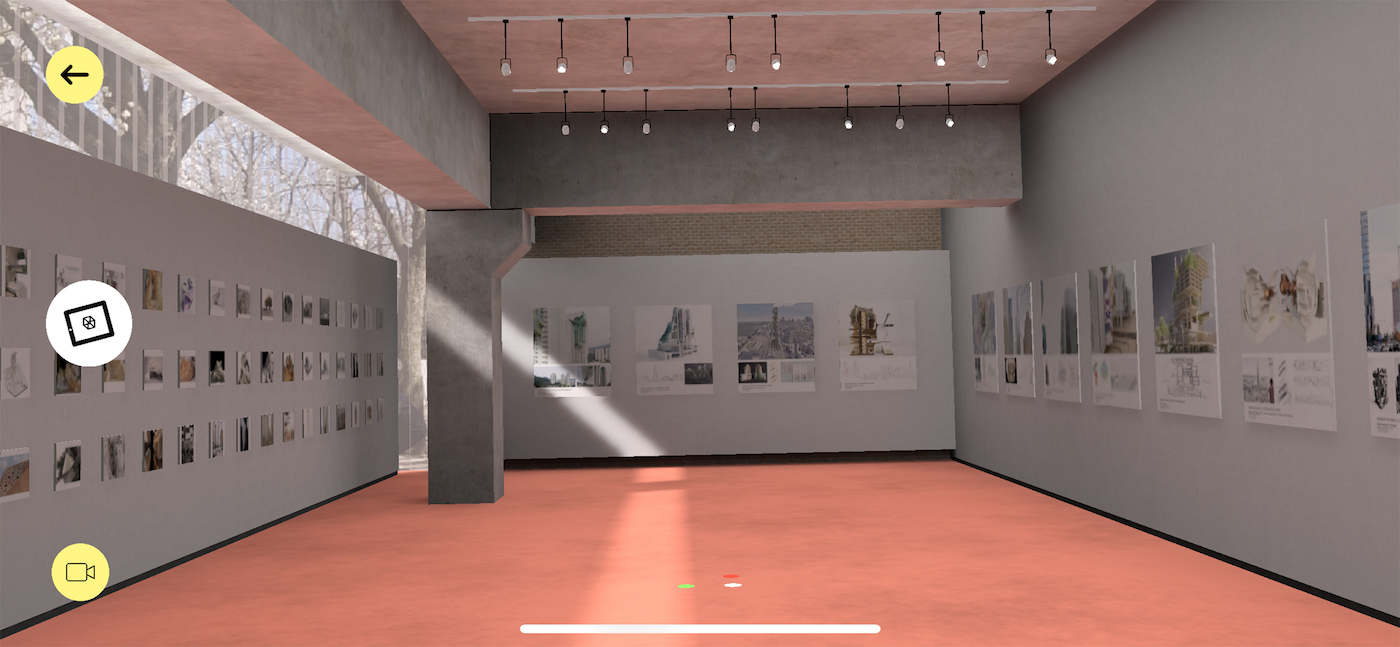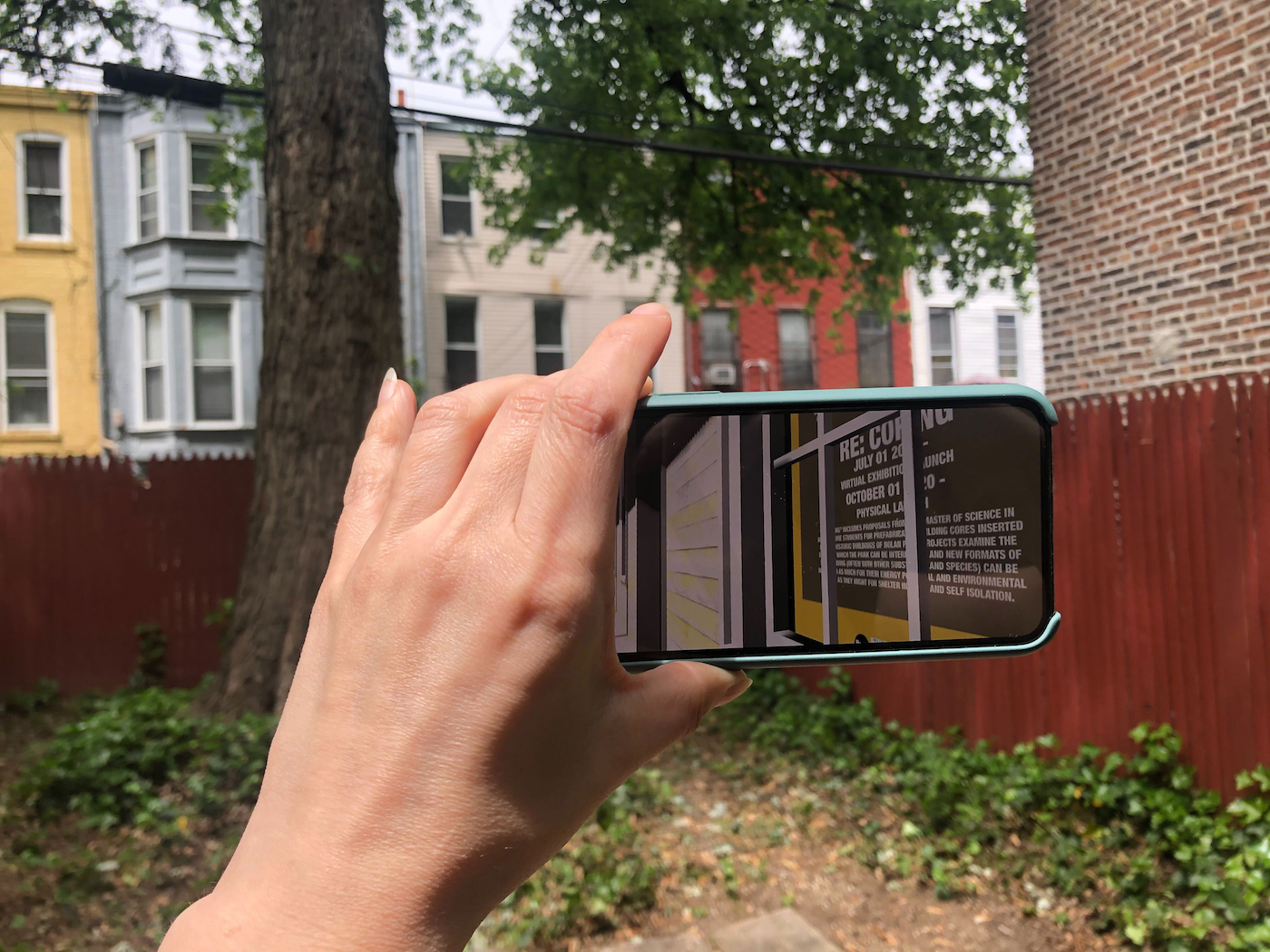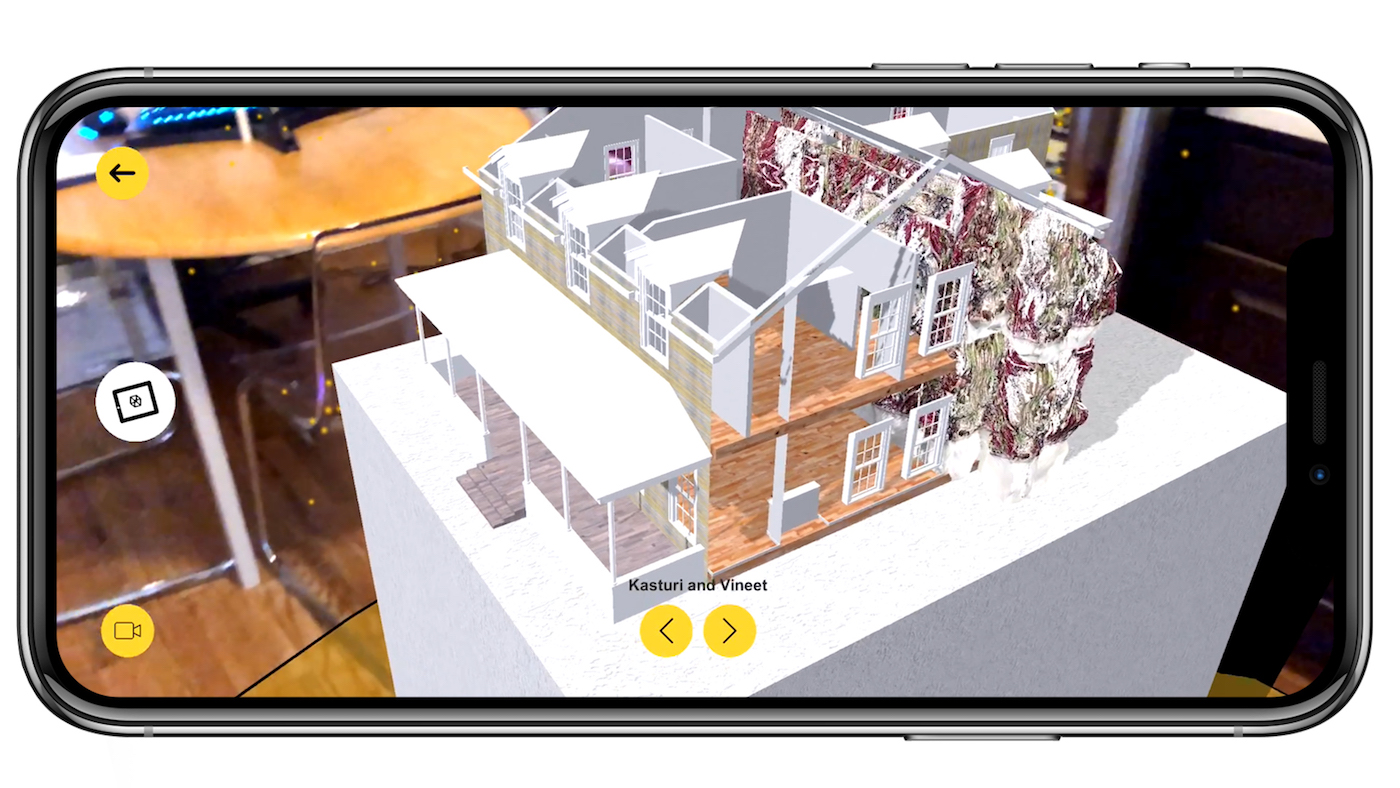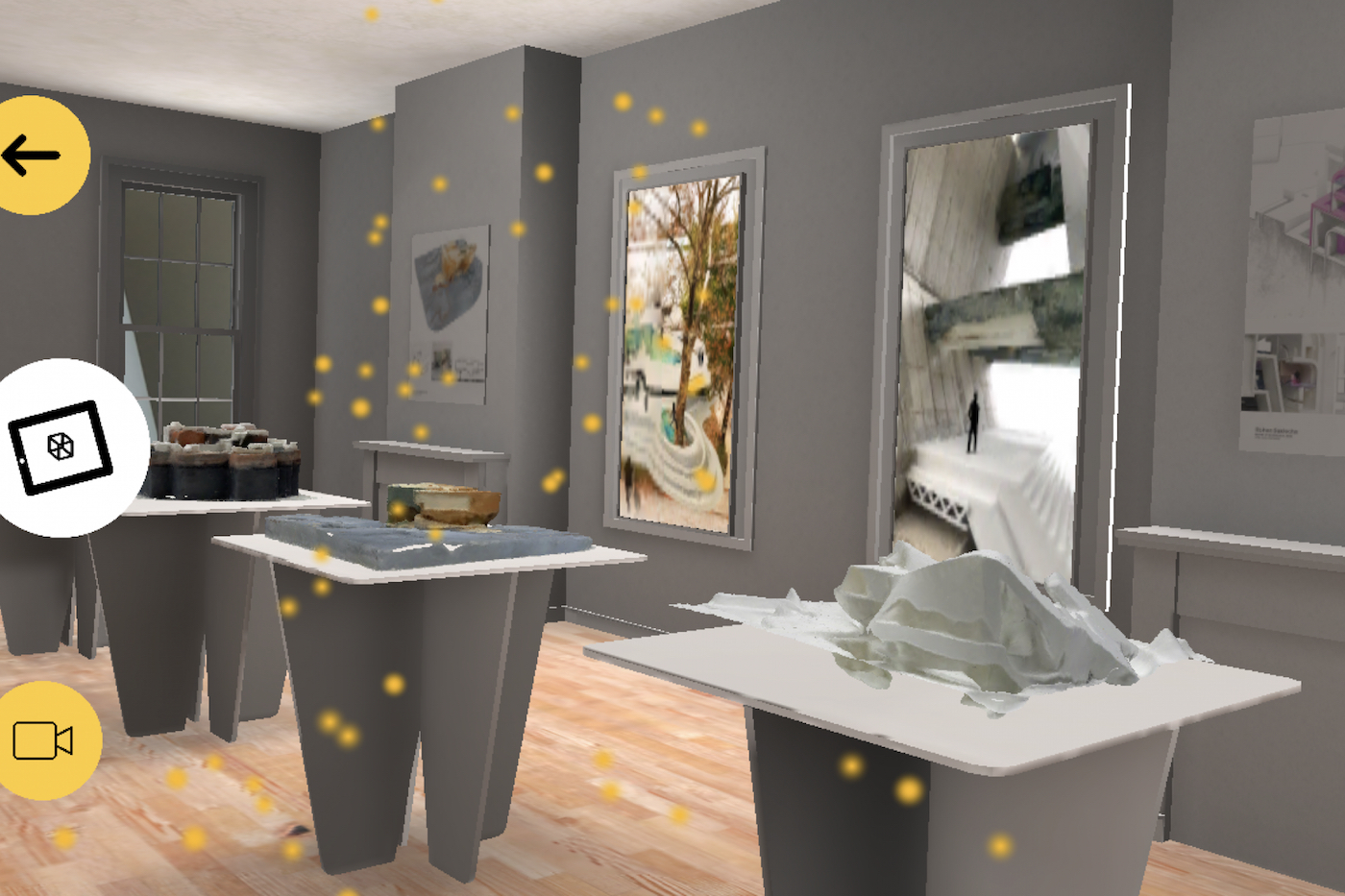You can now transform any open space into an exhibition of Pratt Institute student work that you can explore with just your smartphone. Released this spring, the Pratt Virtual Exhibitions app was created for iPad and iPhone by the Graduate Architecture and Urban Design (GAUD) program in the School of Architecture.

Pratt Virtual Exhibitions app (screenshot courtesy GAUD)
You can now transform any open space into an exhibition of Pratt Institute student work that you can explore with just your smartphone. Released this spring, the Pratt Virtual Exhibitions app was created for iPad and iPhone by the Graduate Architecture and Urban Design (GAUD) program in the School of Architecture. The app uses augmented reality (AR) technology to overlay exhibitions on your surrounding environment so you can move around places such as Higgins Hall on the Brooklyn campus and a historic house on Governors Island as if you were there in person.
AR, virtual reality (VR), and mixed reality technologies were part of the School of Architecture curriculum long before the pandemic postponed and canceled in-person exhibitions. “They were actually introduced into the GAUD programs in 2017,” said Ariane Lourie Harrison, visiting associate professor and coordinator of the MS program. “David Erdman, our chair, sought to establish dual intensive areas of focus in creating two tracks: advanced fabrication with physical and digital hybrids and advanced visualization with AR, VR, and mixed reality.”
The app, developed by Jeffrey S. Anderson, visiting assistant professor and GAUD special projects coordinator, in collaboration with Harrison, uses that knowledge to make student work accessible to viewers during COVID-19 and beyond. It currently hosts five exhibitions and will expand in the coming months. On opening the app, users can select any of the available exhibitions and move around them freely (watching out for non-digital hazards) through the use of Simultaneous Localization and Mapping (SLAM) technology.

Using the Pratt Virtual Exhibitions app (photo by Julianna Rose Dow)
“The AR format allows the display of student work to be far more interactive than 2D images hosted on a website,” Anderson said. “It changes the relationship of the user to the work by forcing users to move through space, to get closer and further away from the work, and to experience the work collectively in relation to all the other pieces in the space.”
The Street of the 21st Century, for instance, is presented in a recreation of the gallery space at “The Hall,” a new adaptive reuse space by RXR Realty near the Brooklyn Navy Yard. Work from Master of Science in Urban Design faculty and students that examines transit deserts—using Wallabout Brooklyn as a test case—is displayed on the walls and there are glimpses of Brooklyn through the gallery windows. Densecity presents student investigations into the challenges and benefits of urban density in a facsimile of the Higgins Hall Lobby and Pit spaces.

Rendering of studio models on the Pratt Virtual Exhibitions app (courtesy GAUD)
Each year, GAUD has followed developments with AR, VR, and mixed reality technologies and their representational potential and other applications in architecture. In 2018, students used AR to situate their models onsite at Art OMI as a virtual experience for visitors to the sculpture and architecture park in Ghent, New York, while publications documenting 2017 and 2018 student and faculty work from the Studio of Experiments involved AR components as an alternate way to view the featured projects and essays. This school year, students were exploring AR in anticipation of an exhibition on Governors Island.
“The COVID shutdown simply prompted the idea to transform our intended physical installation on Governors Island into a platform for virtual exhibition,” Harrison said. In a series of virtual exhibitions, GAUD students are engaging with the ongoing redevelopment of the site in the New York Harbor, focusing on Nolan Park, a bucolic corner of the island dotted with 19th-century officers’ homes. One of these houses, planned as a temporary GAUD outpost when the island is reopened to visitors, is recreated in the app.

The Nolan Park house on the Pratt Virtual Exhibitions app (courtesy GAUD)
In Re: Siding, users can navigate the house’s light-filled rooms lined with old fireplaces and wooden floors. The exhibition joins two related research projects, turning the house’s windows into display screens and presenting models and other material on long tables. One project considers ideas for artist residency buildings responding to the historical architecture at the site; the other remixes and transforms textures and patterns found on nearby buildings. A future exhibition in the series, scheduled to be released virtually this summer and physically debuted in the fall, will be Re: Grounding, envisioning a climate crisis center on Governors Island.
The flexibility of the app allows it to be constantly reimagined for new venues and circumstances, both enhancing in-person visits to these student showcases and bringing their innovative work into any space around the world.